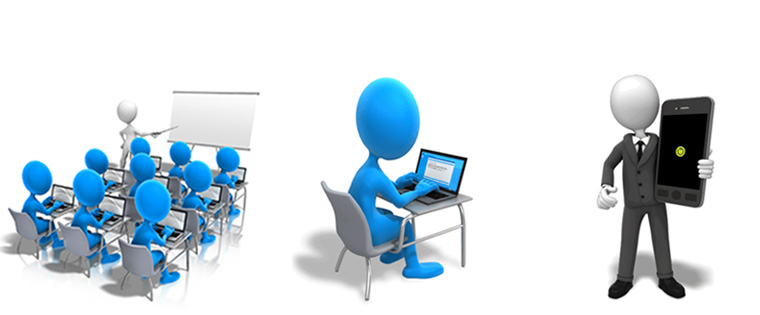5 Reasons to Use Microlearning in Millennial Onboarding

New hire training programs in big classrooms, thick employee handbooks, and lengthy e-learning programs! None of it will work for your millennial new hires. If you are planning on engaging tech-savvy new hires with volumes of information in the millennial onboarding program, then it’s not going to work. We are talking about a generation that prefers to text and tweet instead of sitting through long sessions of classroom training.
After new employees are hired, onboarding is the first interaction they have with the company. As HR and Training managers, you can’t let go of this opportunity to make the best impression. So, one small but powerful strategy to use in millennial onboarding is microlearning. Here are a few reasons microlearning is a must-try strategy in millennial onboarding.
1. Millennials Do Not Appreciate Information Overload
New hires often have to deal with an overload of information in the onboarding program. The reason is because HR managers want employees to get settled quickly and get to work. But for a millennial, this can be overwhelming. It is difficult to retain all the information imparted during millennial onboarding.
For more effective retention, it is always better to use microlearning to deliver information in small, digestible nuggets. Spacing out information in the form of microlearning nuggets is a smart way to beat the forgetting curve.
2. Millennials Look for Flexibility
Ask a millennial whether they want a rigid onboarding program or a more flexible new hire training program, and they will opt for the latter. Millennials are more likely to sacrifice compensation for benefits such as a less-rigid workplace structure and more flexibility at the workplace. They look for flexibility in the millennial onboarding process too. Microlearning can prove to be the ideal solution as it delivers targeted information in short bursts. With microlearning, the millennial onboarding program can be designed to offer ease of accessibility and the flexibility to use multiple mobile devices.
Many HR and training managers hesitate to give millennials this flexibility as new hires cannot be given the choice to onboard at their own pace. While onboarding does not end within the first month of the employee joining the company, you cannot afford to let the millennials take their own sweet time to complete essential modules in the millennial onboarding program. What you can do instead is to offer them a flexible schedule to complete the training at their own pace and on their choice of device, but specify timelines to complete modules in the onboarding program.
3. Millennials Need Relevant Training
Millennial onboarding needs to cover content that is relevant to the evolving challenges that millennials face at work. If the content isn’t relevant, retention and recall of information is not effective.
With microlearning it is possible to create content for fast consumption. It is also easier to personalize the millennial onboarding program to make it more relevant to employees of specific departments. Personalization is possible with a full-fledged e-learning course as well, but microlearning makes it faster and easier.
4. Millennials Love Technology
Millennials love technology and they love to learn on their smartphones. They prefer short bursts of information that can be accessed and applied as needed. Microlearning facilitates learning anytime, anywhere and training content can be accessed on the millennials’ favorite mobile device.
Millennial onboarding programs need to give new hires the information that they require, but without making them sit through long, classroom training programs. But there are certain industries or departments where classroom training cannot be avoided in new hire training. In such cases, microlearning can be used to enhance onboarding in a blended learning environment.
5. Millennials Want Employee-Centric Onboarding
Millennial onboarding programs that are focused on the employees rather than the company find favor with millennials. Onboarding should be flexible, engaging, personalized, and reflective of the organization’s culture.
Many millennial onboarding programs fall under one of these two categories. They are:
- Customized and unique, but expensive
- Reliable, but inflexible and boring
Microlearning gives you the best of both worlds. It provides an employee-centric onboarding experience by making training flexible and interesting, without straining the company’s finances.
Millennials are constantly looking for opportunities to learn and grow and organizations that provide these opportunities are more likely to experience higher retention rates. Microlearning is the smart way to show that your organization is committed to providing employee growth and development. The company’s support for a learning culture has to be emphasized in the millennial onboarding process and microlearning can be used to showcase this effectively.
An interesting millennial onboarding program should be a well-crafted journey with some great experiences in store for the millennials. Microlearning can help you prepare for this journey. Are you ready to explore the opportunities offered by microlearning in millennial onboarding?





